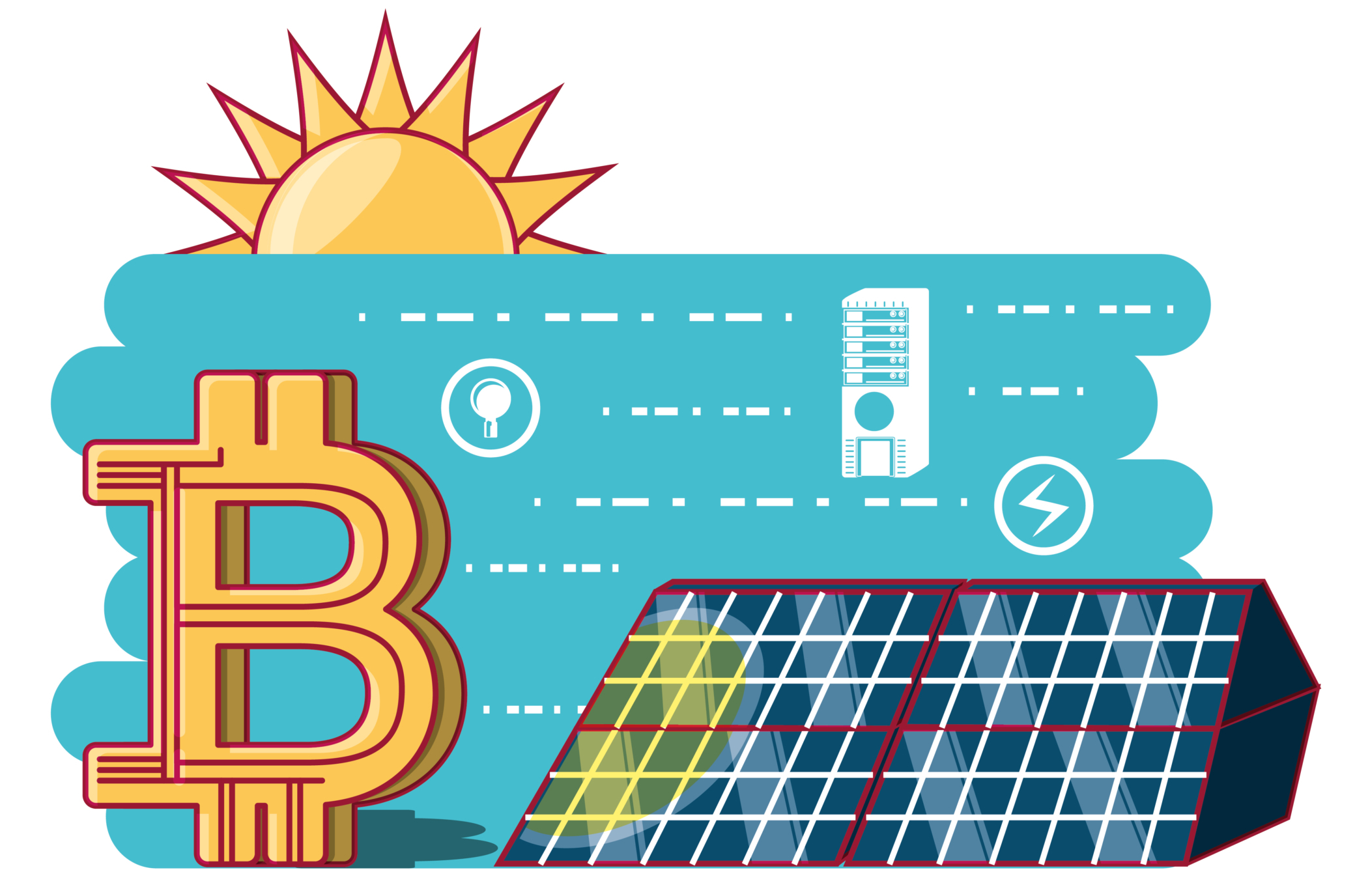Regarding the cryptocurrency Bitcoin and its eco-sustainability, the prejudice that the cryptocurrency has an excessive environmental impact related to the massive use of energy required by mining operations has spread over the years.
Elon Musk, CEO of Tesla, has contributed to increasing the doubts on Bitcoin sustainability. It was March 24, 2021, when he officially declared that Tesla would give the possibility to buy cars with payment in Bitcoin without the cryptocurrency even being converted. Seven weeks later (on May 12th), however, Musk announced with a tweet the suspension of Tesla purchases with payment in Bitcoin until the problem related to its alleged negative impact on the environment is resolved. The reference is to the energy consumption and carbon dioxide emissions required for Bitcoin’s blockchain operations that could have negative consequences on our planet. As a result of this tweet, Bitcoin immediately suffered heavy consequences by registering a dizzying drop in its value.
It is perhaps worth remembering that any human activity that makes use of technology requires energy. From the smartphones we all own, to video games, to systems used in the traditional financial world, to the internet and related cloud services, not excluding electric cars. Energy is needed both to produce the devices on which the activities rely and during their use.
How Bitcoin consumes energy
The reason for Bitcoin power consumption essentially lies in Proof of Work (PoW), which is the consensus mechanism fundamental to the cryptocurrency’s operation. It consists of a competition between different operators, called miners, each of which aims to be the first to complete the correct completion of a new block to be added to the blockchain. The block, in order to be complete and accepted by the network, must contain demonstrably valid transactions and must have specific characteristics. In order for these fundamental characteristics to be in line with the protocol, it is necessary to proceed through numerous attempts until finding the value that correctly completes the block. This mechanism, therefore, requires trying the same calculations several times with the variation of a few parameters until the correct result is obtained. The miner that first completes the block and submits it to the network is rewarded with new bitcoins in addition to the small fees paid for each transaction verified and processed. Obviously, the large number of attempts that must be made is costly in terms of the energy needed to power the computers that perform the calculations.
“Green” blockchain
Bitcoin is certainly an energy-intensive industry, but there is no evidence that it is a consumer of fossil energy sources; indeed, there is evidence to the contrary. According to the Cambrigde Center for Alternative Finance, Bitcoin’s annualized energy consumption is about 150 terawatt-hours or 0.6% of global production and 0.69% of overall consumption. But while consumption is objectively massive and relatively easy to estimate, it is much more complicated to actually understand the type of consumption, i.e. whether it is energy-based on sources that generate carbon dioxide emissions or, conversely, energy from renewable sources. In this regard, it has been shown that the share of electricity originating from renewable sources such as hydro, solar, and wind is increasing.
As mentioned, Bitcoin’s energy consumption is due to the Proof-Of-Work consensus algorithm. Many other cryptocurrencies use different, lower-energy consensus algorithms, such as Proof-of-Stake.
Bitcoin and renewable energy
Because they must have cheap energy for the many computations they need to perform, miners look for suppliers with whom they can close advantageous deals. Most of the time they are producers of energy from renewable sources. Bitcoin actually harnesses the energy that would otherwise be wasted or untapped: renewables allow less control over energy production: there may be times when nature provides much more energy than is required by the market. Bitcoin mining is extremely competitive and therefore incentivizes the constant search for energy at the lowest possible cost, in fact, 73% of miners use a mix of energy composed of almost 40% from renewable sources with zero impact. Some miners, especially in Europe and the United States, have made agreements with hydroelectric, solar, and wind power plants so they install their equipment directly at the plants and produce bitcoin directly on-site and often it is thanks to them that green energy production sites that, due to insufficient government incentives, would have ended up closing, are able to stay open.
Blockchain green projects
The road to a green blockchain seems to be increasingly on track. Meanwhile, there are already a number of more environmentally sustainable cryptocurrency alternatives and projects that rely on the use of renewable energy sources.
Solarcoin, for example, is a cryptocurrency whose distribution allows you to receive incentives to generate solar electricity. Solarcoin mining is done solely and exclusively through solar power generation: it creates 1 token for every megawatt-hour generated with solar power, thus repaying the plants.
Bitgreen is a crypto that allows you to make gains by acting on purchases that mitigate negative environmental impact and promote a sustainable economy
Green Energy Token which was created with the idea of supporting the development of green energy technology by participating as investors in new and existing green energy companies. Green Energy Token mining offers a green and high-performance blockchain processing solution.
Among the best blockchain projects is Clean Water coin that was created to help countries that do not have access to clean water, especially Africa. It is a multi-currency wallet for cryptocurrencies, where a tenth of each executed transaction goes to the charity CharityWater.org.
Mission Blue, on the other hand, was born to be able to conduct research and studies on the ecosystem of the coral reefs of the seas. The data collected is stored on the blockchain and with the help of donations and investments in cryptocurrencies, it contributes to the activation of programs intended to protect and safeguard key areas in order to preserve the world’s oceans.
Finally, a project based on the use of blockchain has been initiated in the Iberdrola Group to guarantee, in real time, to customers that the energy supplied and consumed is 100% renewable. Using this technology, the facilities where the electricity is produced have been linked to specific consumption points, allowing the source of the energy to be traced. This process provides transparency and ultimately incentivizes the use of renewable energy. It also allows for the acceleration and automation of renewable energy certification processes, as there is a greater degree of traceability and the blockchain makes the provision of green energy more efficient, flexible and transparent. To realize this initiative, they were supported by the Energy Web Foundation a scalable, open-source blockchain platform specifically designed to meet the regulatory, operational and market needs of the energy sector.
Conclusions
While it is true that Bitcoin mining consumes a lot of energy, it is also true that a large part of this energy is produced with alternative sources and its use by miners allows to avoid that part of this energy is lost because it is produced at times when the market does not require it.
Moreover, Bitcoin, in fact, is a concrete opportunity to increase the share of renewable energy in our electricity grids. Today the world of Bitcoin and more generally of cryptocurrencies is increasingly focused on environmental sustainability and aims at the green transition with the Crypto Climate Accord inspired by the Paris Climate Agreement that aims to be able to use only renewable energy sources for cryptocurrency mining by 2025. The benefits that blockchain can bring in terms of sustainability are so substantial that smart solutions are being found to make it as green as possible.








